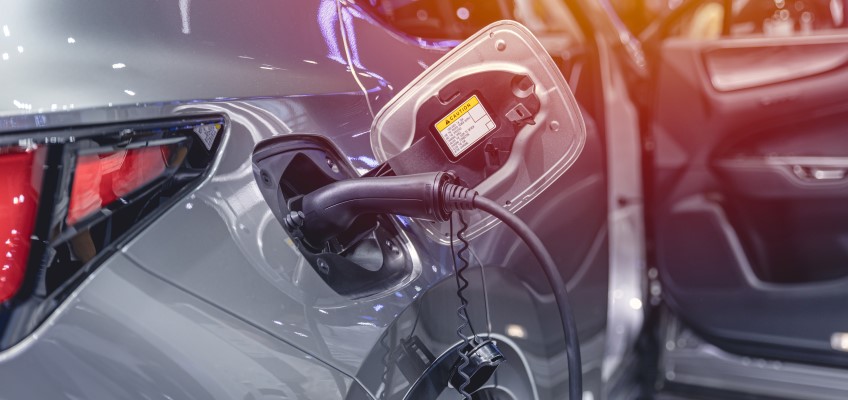Electrified vehicles in Sweden – an analysis of rechargeable vehicles over time and by location

The Swedish road vehicle fleet finds itself in a transitional phase, i.e. from mainly using fossil fuels to instead using electricity for propulsion. In the appropriations document for 2024, Transport Analysis was tasked with producing a knowledge base concerning a large-scale electrification of the transport sector. This knowledge base is to include an updated analysis of the ownership conditions surrounding and the regional distribution of rechargeable vehicles.
Read/download publication
In the present report, Transport Analysis has consequently updated and expanded upon the analysis presented in May 2022 in its report Electric road vehicles – ownership, regional analysis and a potential development by 2030.
The earlier report pointed out the importance of private leasing with regard to the number of rechargeable vehicles registered by private persons. Up until 2021 it was mainly companies that purchased and owned rechargeable passenger cars, but purchases of rechargeable cars by Swedish households then rose rapidly, exceeding the number of company-owned cars in 2022. Rechargeable cars were initially registered mainly in urban areas, but they have since become increasingly common along the Norrland coast and in smaller towns. The second-hand market contributed to some extent to the increased dispersion of rechargeable cars in Sweden, albeit mainly within the same geographic vicinities.
When we study the developments from 2021 up to Q3 2024, we can see with regard to passenger cars that rechargeable cars are now present in all the municipalities in Sweden, which was not the case in 2021. However, these vehicles remain unevenly distributed between cities and rural towns. The rechargeable cars still tend to be registered mainly in urban municipalities and, so far, we are unable to discern any actual spreading from the second-hand market from urban municipalities to more sparsely populated areas. This means that the vehicle fleet, consisting primarily of fossil fuel-powered cars, continues to age in rural towns, while the transition to electrification and a younger fleet has begun in more urban areas.
Private leasing
One significant change we were able to identify concerned the role of private leasing in the electrification of the passenger car fleet. As of 2020 it became more common for a private individual to lease a car than to buy one. The number of privately leased cars subsequently declined in 2023 and the first three quarters of 2024, and the share of rechargeable cars leased privately has also fallen notably. Private individuals who are leasing a car have instead reverted to leasing petrol-powered cars, with such cars also being those most commonly leased prior to 2020. This trend is likely attributable to changes in pricing for privately leased EVs, while high interest rates and the elimination of bonuses have increased the monthly costs to the extent that petrol-powered cars have become more attractive again. Among other new car consumers, i.e. private individuals who purchase or companies that lease or purchase a new car, we can discern only a slight weakening in the share of new EVs, which is being offset to some extent by an increase in the number of newly registered plug-in hybrids.
We have also confirmed that the factors that had formerly determined which households would choose an EV are largely the same in this study. This means that the households purchasing and leasing EVs in both years are similar, and that no significant broadening of these customer groups has occurred over time.
Newly registered electric light lorries
The share of newly registered electric light lorries has grown dramatically since 2021. The pace of this increase has, however, slowed, and this figure appears to have increased only marginally in 2024 compared to 2023. The distribution of electric light lorries across Sweden is similar to that of passenger cars. However, their numbers are lower, and they remain entirely absent in some municipalities. Plug-in hybrids are uncommon among light lorries, and nearly all rechargeable light lorries are EVs.
Electric heavy lorries are still few in number, and it is hard to know whether they are being used in the municipalities in which they are registered. It is consequently not possible to comment on their distribution in Sweden at present. The means available to conduct such an analysis in the future will improve as more vehicles enter into service. In 2021, electric heavy lorries had just started to be registered in low numbers. These numbers have since risen, and it appears that electric heavy lorries will account for roughly 6 per cent of newly registered heavy lorries in 2024. One reason for the increase in 2024 is the newly created ‘lighter heavy lorries’ segment, which was introduced because of an exception in the regulations governing driving licences that permits category B licence-holders to drive a heavy electric lorry weighing up to 4.25 tonnes. These vehicles are used and viewed in most respects as light lorries, and are thus not fully equivalent to other electric heavy lorries.
Bus fleet
The bus fleet started to become increasingly electrified back in 2021, and its degree of electrification has continued to grow since then. However, the share of newly registered electric buses varies considerably from year to year, depending on what procurements are made during the year in question. The electrification of the bus fleet is attributable mainly to new electric city buses. We now see that nearly all the buses in this segment are electric. At the same time, there are relatively few electric regional buses on the market, making it likely that growth in terms of newly registered electric buses will be fairly weak moving forward.
Slowing of the transition
Overall, we see some slowing of the transition to electrified operation in many parts of the vehicle fleet. Sweden was an early adopter in terms of electrifying its vehicle fleet. Up until September 2024, Sweden boasted the third highest share of newly registered EVs in Europe. However, the weakening trend seen in Sweden does not appear to be present in a number of other European countries. They are now very close to Sweden in terms of their share of newly registered EVs and, compared to 2022, EV sales in those countries have grown up to September 2024. If this pattern persists, i.e. with increases in other countries and a decrease in Sweden, a number of other countries will likely surpass Sweden in terms of their shares of newly registered in EVs in 2025. However, we believe that the slowing trend in Sweden is temporary; with favourable economic growth, private individuals will, to a greater extent, be looking for new cars in general, and for EVs in particular. An improved economy will likely also favour sales of light lorries powered by electricity. The electrification of the bus fleet will also likely accelerate as the range of available electric bus models expands and improves.
